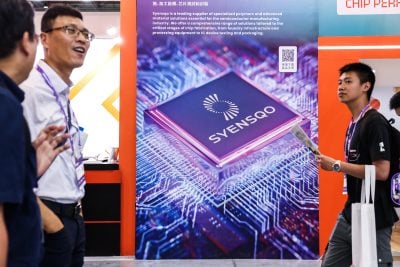When 30 year-old artist Osinachi was growing up in Aba, a city in southeast Nigeria, he was obsessed with screens. His father was an early internet adopter and took his son to cyber cafes, and evenings were spent playing video games on his Sega Megadrive before he discovered how to make digital art on Microsoft Word 15 years ago.
In 2017 Osinachi was working as an academic librarian at the University of Nigeria, Nsukka, when a Google alert informed him about the crypto art scene – a category of art related to the Ethereum blockchain – where non-fungible tokens (NFTs) are used as a type of digital asset to record the unique ownership of property such as images, videos, music and other collectibles.
Non-fungible items can include paintings, song files or even tweets – like Twitter CEO Jack Dorsey’s first ever message. These things are not interchangeable with other items because they have unique properties and no two units are the same. The growing popularity of NFTs has puzzled many, but it has opened the door for artists and creators from Africa to sell their content to a global audience.
In March, Osinachi sold art for $75,000 worth of NFTs in 10 days, before selling Becoming Sochukwuma – a painting showing a black dancer wrapped in a tutu swirling on a computer screen – for $80,000 on the crypto-art market in April.
“Digital art has a place on the same shelf as traditional art,” Osinachi told African Business. “Collectors are making huge returns on investments. [Traders are] buying digital pieces for $1,000 and selling for $20,000 within a short period of time, so I would say that purchasing with NFTs is just like buying traditional pieces – it’s just that how you store and display it is different.”
NFT collectors can flaunt their digital collections at online NFT marketplaces like SuperRare or Showtime, which allows viewers to like or comment on individual pieces. Collectors are displaying their digital artwork files – jpegs, gifs, MP4s or 3D digital models – in virtual reality platforms online or at home on HD screens uniquely designed to showcase digital art.

Art galleries, auction houses and art exhibitions are following suit. In November, at the sixth edition of Art X Lagos – West Africa’s biggest art fair – digital art was auctioned online in partnership with SuperRare, while art lovers visited around 30 physical galleries on show from Africa and the diaspora.
“Each piece in the NFT exhibition sold for not less than one Ether, which was around $4,500 or $4,600,” says Osinachi, who curated the show.
The value of an NFT can be set by the artist or bid for at auction. NFTs can be bought or sold using virtual wallets that exchange the cryptocurrency Ether, which can be exchanged for fiat currencies like the US dollar and withdrawn as cash.
“It hasn’t been a walk in the park,” says Tokini Peterside, Art X Lagos’ founder. “Any time there is a significant change in any sector, there is always some pushback and we know that some collectors worry NFTs will have a negative impact on their traditional collections.
“For this reason we included within our Art X Talks programme a special conversation on NFTs, to help demystify NFTs, and reframe the debate around meaning, intention and the creative drive that lies at the core of this revolution.”
Digital artists are the new rock stars
The global NFT marketplace has experienced an exhilarating year to date, with trade surging to $10.7bn in the third quarter of 2021.
Mike Winkelmann, the American digital artist who goes by the name Beeple, sold his Everydays: the First 5000 Days for $69.3m in March at Christies in New York. It was a digital collage of every piece of work he had created daily since 1 May 2007 and was minted – the process of turning a digital file into an NFT on the Ethereum blockchain – at Christies, making Beeple the highest-grossing digital artist in the world.
For Nigerian multidisciplinary creative Niyi Okeowo – who goes by the name HelloMrColor – artists entering the scene expecting overnight success will likely be disappointed, and should instead focus on building a story around their work.
Okeowo’s Afro-futurist art combines photography, 3D and graphic design, and his piece Indigo Child – inspired by the new-age concept of indigo children born with supernatural abilities and powers – sold at SuperRare’s marketplace in November for 1.2 Ether ($5,387).
“Digital artists are becoming the new rockstars,” says Okeowo. “The most successful people are able to embrace new technology and human beings were made to adapt. But I think the attitude of the older generation of Nigerians towards digital art needs to change. They shouldn’t be upset that the young generation is benefiting from technology.”
In June, the Nigerian government banned Twitter after the US social media company removed a controversial post from President Buhari, cutting off one important channel to engage with potential collectors and market their art. In February, a directive from the Central Bank of Nigeria had asked commercial banks to stop facilitating cryptocurrency transactions, creating additional anxieties for digital artists.

When an artist sells work on the blockchain they sign a smart contract, a self-executing agreement between buyer and seller directly written into lines of code, that ensures royalties – often between 10% and 30% – on all future sales, which has provided a degree of financial security as the scene goes mainstream.
Yet the ever increasing “gas fees” – the term given to the fee that most NFT trading platforms charge to mint their NFTs though the Ethereum blockchain – is prohibitive to many emerging artists from Africa, says Peterside. Art X Lagos covered the costs associated with minting NFTs at November’s auction, although the boarding process around minting needs to change so more artists from Africa can ride the NFT wave.
“I can afford to pay a gas fee of say $200. But new artists entering the space can’t afford to do that. They haven’t set a workflow as much as $100 yet, so they can’t actually afford to pay such huge gas fees, but in time Ethereum’s network upgrades will provide higher speeds and lower gas fees, and art fairs like Art X will play their part,” says Osinachi.
Environmental impact
With the digital art market flourishing, a laser-focus is being shone on the environmental impact of NFTs.
The Proof of Work (PoW) security model on which Ethereum runs requires extensive computer power, graphics cards and electricity. The ecological cost of a single Ethereum transaction is estimated to have a footprint on average of around 35 kWh, roughly equivalent to an EU resident’s electric power consumption for four days, says Jason Bailey, founder of Artnome – an analytical database of the world’s leading artists.
Bailey analysed 18,000 crypto art NFTs and found that on average a single edition NFT on the blockchain used 340 kWh, which is the equivalent of driving a petrol car 1,000km or boiling a kettle 4,500 times.
Ethereum’s developers have planned a shift to the alternative Proof of Stake (PoS) security model, via a blueprint called Ethereum 2.0 which will require dramatically less energy for artists and collectors looking for an environmentally friendly alternative. A present strategy is to try and offset some of the carbon cost of minting NFTs by purchasing carbon credits.
Planning ahead now before the market takes shape will help to lay the groundwork for more sustainable NFTs, says Bailey.
“Humans are social creatures and we like to collect things and express ourselves through those collections, and this is a chance to rethink what a more inclusive art world might look like.”
Want to continue reading? Subscribe today.
You've read all your free articles for this month! Subscribe now to enjoy full access to our content.
Digital Monthly
£8.00 / month
Receive full unlimited access to our articles, opinions, podcasts and more.
Digital Yearly
£70.00 / year
Our best value offer - save £26 and gain access to all of our digital content for an entire year!
 Sign in with Google
Sign in with Google 



